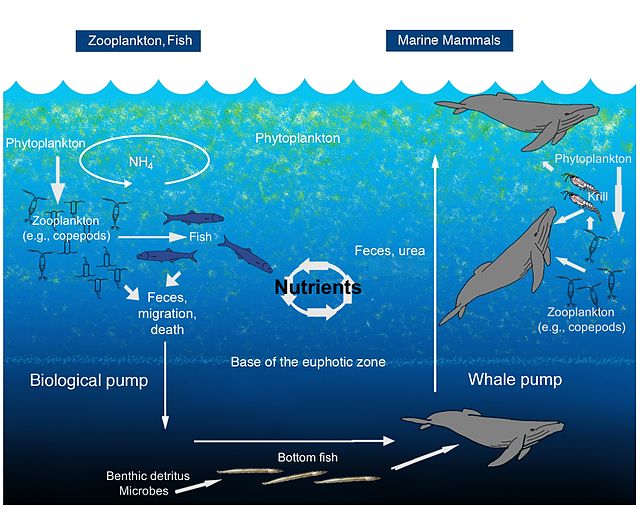The nitrogen cycle is the biogeochemical cycle by which nitrogen is converted into multiple chemical forms as it circulates among atmospheric, terrestrial, and marine ecosystems. The conversion of nitrogen can be carried out through both biological and physical processes. Important processes in the nitrogen cycle include fixation, ammonification, nitrification, and denitrification. The majority of Earth's atmosphere (78%) is atmospheric nitrogen, making it the largest source of nitrogen. However, atmospheric nitrogen has limited availability for biological use, leading to a scarcity of usable nitrogen in many types of ecosystems.

Global cycling of reactive nitrogen including industrial fertilizer production, nitrogen fixed by natural ecosystems, nitrogen fixed by oceans, nitrogen fixed by agricultural crops, NOx emitted by biomass burning, NOx emitted from soil, nitrogen fixed by lightning, NH3 emitted by terrestrial ecosystems, deposition of nitrogen to terrestrial surfaces and oceans, NH3 emitted from oceans, ocean NO2 emissions from the atmosphere, denitrification in oceans,
Classical representation of nitrogen cycle
Marine nitrogen cycle
The main studied processes of the N cycle in different marine environments. Every coloured arrow represents a N transformation: N 2 fixation (red), nitrification (light blue), nitrate reduction (violet), DNRA (magenta), denitrification (aquamarine), N-damo (green), and anammox (orange). Black curved arrows represent physical processes such as advection and diffusion.
A biogeochemical cycle, or more generally a cycle of matter, is the movement and transformation of chemical elements and compounds between living organisms, the atmosphere, and the Earth's crust. Major biogeochemical cycles include the carbon cycle, the nitrogen cycle and the water cycle. In each cycle, the chemical element or molecule is transformed and cycled by living organisms and through various geological forms and reservoirs, including the atmosphere, the soil and the oceans. It can be thought of as the pathway by which a chemical substance cycles the biotic compartment and the abiotic compartments of Earth. The biotic compartment is the biosphere and the abiotic compartments are the atmosphere, lithosphere and hydrosphere.
Generalized biogeochemical cycle
The oceanic whale pump showing how whales cycle nutrients through the ocean water column
Beach scene simultaneously showing the atmosphere (air), hydrosphere (ocean) and lithosphere (ground)
Some roles of marine organisms in biogeochemical cycling in the Southern Ocean








